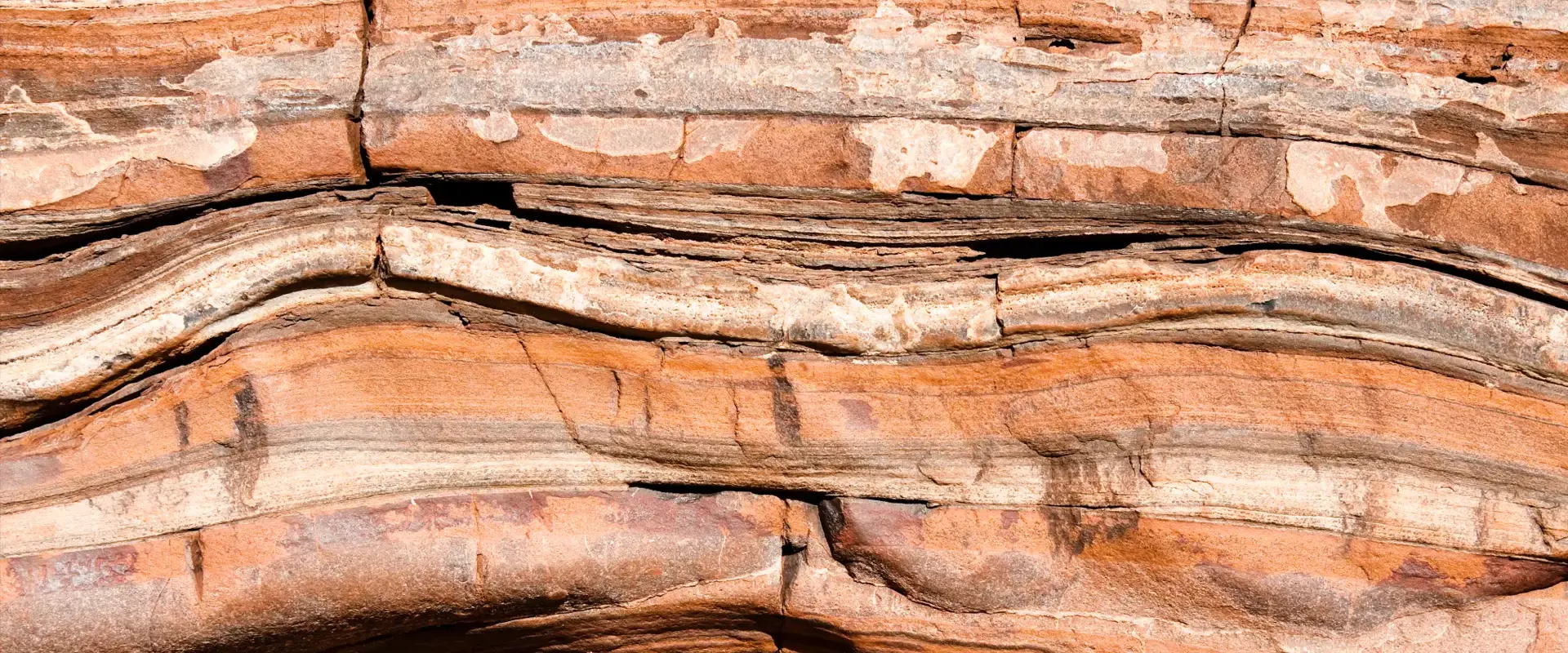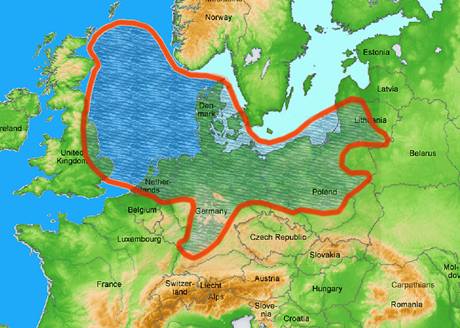
Zechstein Reefs, North Sea

Hidden beneath the waters of the North Sea between the UK and Norway are the Zechstein reefs. The North Sea might not usually conjure up an image of reef conditions in your mind but these 250 million year old reef systems are found across a significant section of the North Sea.
The Zechstein reefs were formed in the ancient Zechstein Sea which dates back to the Upper Permian period. They were formed over a period of 5-7 million years in the sea that stretched across the east of England, much of the modern North Sea and into modern day Denmark, Poland and Germany.
 |
|
| Hawthorn Quarry on the Durham coast with exposures of Permian limestones and reefs formed in the Zechstein Sea: © Andrew Curtis |
When sea water is evaporated it leaves behind mineral deposits of chemical salts which form rock layers. These are called evaporite deposits. Repeated cycles of marine flooding and evaporation led to deposition cycles of sediments followed by evaporite salts. The salt accumulated into layers hundreds of metres thick, but it didn’t stay put! Salt has a habit of flowing in the subsurface and rises up into domes called diapirs.
The evaporite materials are an important resource, particularly the potash salts which are used for fertiliser in agriculture and are mined at Boulby Mine near Middlesborough and all over central Europe. These rocks and the evaporite cycles are very well understood by geologists because they form part of the North Sea oil reservoir portfolio. Evaporite sequences are particularly important for petroleum geology because they act as an effective seal cap rock in petroleum systems. This concentrates the hydrocarbons in the reservoir and creates reserves of economic grade. In the case of the Zechstein reefs, the sedimentary rocks that were bulged upwards by the formation salt domes created important traps for hydrocarbon in the South North Sea but the big prizes were hosted in the strata below the salt, sealed in by the impermeable salt deposits (e.g. in the Rotliegend).
The Zechstein reef oils reservoirs are still being drilled for oil and they were included in the UK Oil and Gas Authority 2017 licensing round.
Twinned with: Sicily in the Mediterranean Basin
Regionally extensive salt deposits are rather rare in the geological record as they require very large, land-locked marine basins from which sea-water can evaporate with only sporadic periods of recharge. Along with the ancient Zechstein Sea, one of the best studied of these so-called “saline giants” is found in the region now containing ...continue reading
Related Links
- Dan McKenzie Archive
- The Rock Cycle
- Plate Tectonics schools website
- Plate Tectonics Glossary
- Permian
- Geoscientist: Water, sandstone & climate change
| Back to main stories page > |
Other sites
- Twin: Windward Isles
Cwm Idwal
- Twin: Mount Pinatubo
Sperrin Mountains
- Twin: Sierra Nevada
Southern Uplands
- Twin: Nankai
Ben Arnaboll
- Twin: Glarus Thrust
Outer Isles
- Twin: Tohoku Earthquake
Clogherhead and Shannon
- Twin: Papua New Guinea
Cairngorms
- Twin: New Hampshire Granites
Great Glen Fault
- Twin: North Anatolian Fault
The Lizard
- Twin: Troodos Ophiolite
Yoredales
- Twin: Antarctica
Stanage Edge
- Twin: Ganges Delta
Hartland Quay
- Twin: Zagros Range
Amroth-Saundersfoot-Tenby
- Twin: Salt Range, Pakistan
Vale of Eden
- Twin: East African Rift Valley
Zechstein
- Twin: Sicily
Alderley Edge
- Twin: Navajo Sandstone
Isle of Skye
- Twin: Mount Kilimanjaro
Lulworth Cove
- Twin: Albania
Giant's Causeway
- Twin: Cascade du Ray Pic
